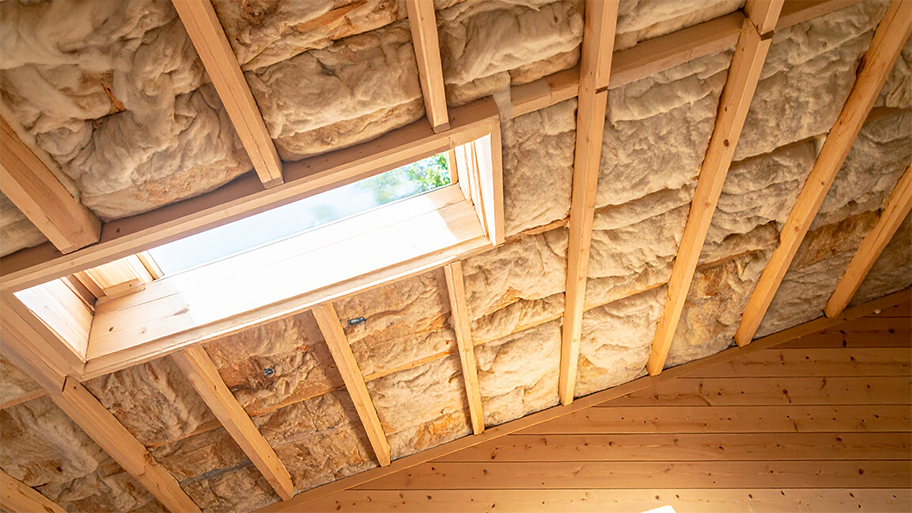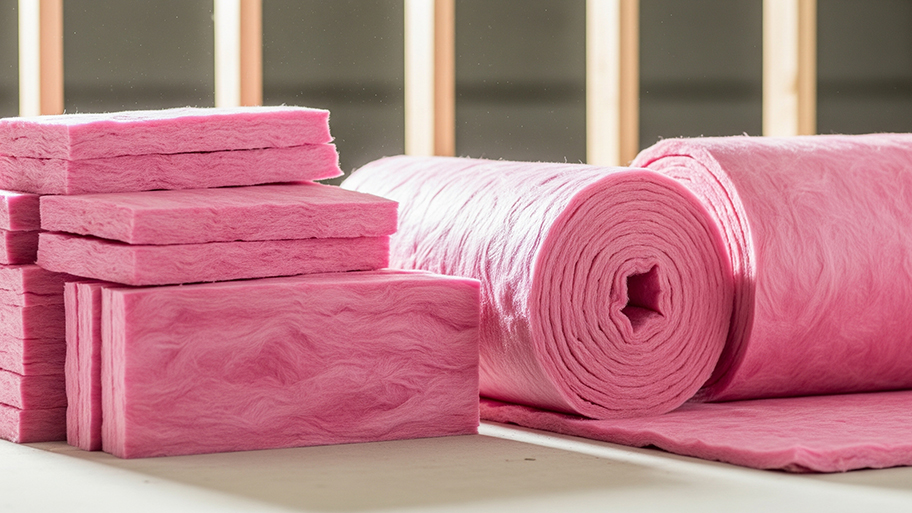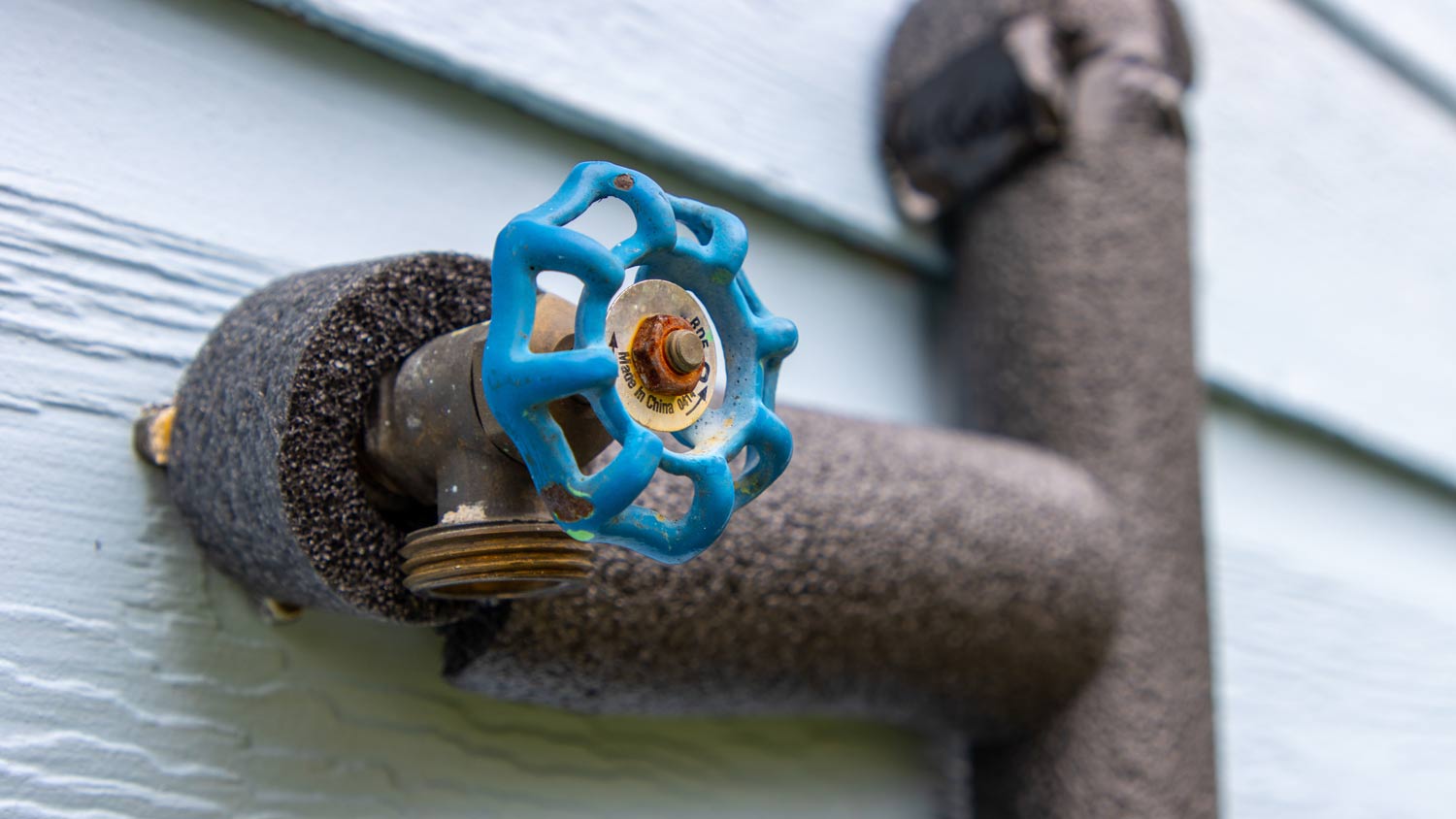
Insulating your attic can massively improve your home’s efficiency and reduce electric bills. Use this guide to find out what attic insulation will cost you.
Make your garage just as cozy as home with the right insulation


Properly insulating your home is one of the best ways to cut energy costs and keep your living space more comfortable. But what about your garage? Are there benefits to insulating an attached or detached garage, and what are the best types of insulation for garages?
Below, we’ll take a look at a few types of insulation ideal for garage spaces and also break down when it makes sense to insulate your garage.
First and foremost, if you’re going to spend the money and time insulating your garage, you should absolutely insulate the garage door; otherwise, the insulation around the walls and ceiling will do little to retain heat since it can all escape through the giant door.
That’s why every garage insulation project should begin with a plan for insulating the garage door. Home improvement stores typically sell kits that you can install yourself, but if you’re hiring a local insulation company to handle the rest of the garage, they’ll usually include the door in the project.
Typical garage door insulation is made of fiberglass material covered in vinyl, though you can also use rigid foam insulation for garage doors since it’s cut-to-fit.
Insulation is only half the battle in retaining heat in your garage; you’ll also want to ensure your garage door is perfectly sealed with weather stripping and special trim.
Fiberglass insulation is the most common type of insulation for homes — and the most affordable. That makes it a popular candidate for garage insulation as well, especially because homeowners will generally budget less to insulate their garage than they would a living space within the home.
You can purchase fiberglass batts at local home improvement stores and install the insulation yourself in the wall framing over a weekend. Install drywall over the insulation, or purchase paper-faced batts so that itchy, fuzzy, and admittedly dangerous fiberglass isn’t exposed to people who spend time in the garage.
According to Angi data, adding insulation to an existing home—whether that’s to a garage or the attic—accounts for over 80% of all batt and roll insulation projects. These sheets will easily fill large, open spaces.
While fiberglass is an affordable and easy-to-install type of garage insulation, keep in mind that it’s vulnerable to moisture, it’s less effective than some other insulation types and even poses a fire hazard if not properly installed.
Rigid foam is easy to install and has a higher R-value, which makes it more effective than fiberglass at insulating a garage. This material is ideal for garages because it can be installed on top of fiberglass batts for additional insulation, or you can install it directly on concrete and cinder block wall surfaces. This also makes rigid foam board one of the best types of basement insulation.
Rigid foam is also a wonderful material for reducing sound — whether the garage is a workshop or a place for your teen’s band to practice, the soundproofing material of rigid foam could be desirable.
Be careful when installing. Rigid foam is cut-to-fit, which can make it more challenging to work around all the outlets, pipes, and wiring around the garage space. It’s also more susceptible to insects, including termites.
Spray foam insulation is one the best types of insulation for garages, but it’s also on the more expensive end. Spray foam insulation costs $2,775 on average.
The high price reflects the high effectiveness of spray foam; it has a high R-value, it resists insects and mold, and you can insulate otherwise hard-to-reach places with it. For most garage projects, spray foam might be overkill — but if you’re converting a garage into a gym or even a living space, spray foam will get the job done.
Installing spray foam insulation is not a DIY task we generally recommend. Instead, get quotes from several spray foam insulation contractors near you and let a pro handle the job.
Cellulose insulation is largely made of recycled newsprint, which makes this an eco-friendly type of insulation for your garage. The loose-fill insulation materials, which are treated with boric acid to prevent any fire hazards, require a blower for installation; with the blower, you can fill existing wall cavities by cutting (and later patching) small holes.
Over time, however, cellulose insulation tends to settle. It also requires drywall; if your garage remains unfinished (i.e., with framing exposed), you won’t be able to use this material.
Think this material is the right fit for your garage? Here’s how to install cellulose insulation in a day.

If your garage is not a conditioned space — that is, you don’t attempt to cool or heat it with an HVAC system — it doesn't make sense to insulate it. Or, at least, not the entire garage.
For instance, if you have an attached garage and you’re worried heat from your home is spilling into your unconditioned garage space, you can simply insulate the shared wall but not the rest of the garage. If there’s a living space above the garage and the floor is always cold, insulating the floor of that room and the ceiling of the garage can make sense.
In some cases, though, it does make sense to insulate the garage. If you want to use the garage as a work space, gym, or even a living space, you’ll want to install the proper ductwork so that it’s heated and cooled — and then insulate it to better regulate the temperature inside the garage.
Insulating your garage can have a number of benefits, including:
Regulating temperature: First and foremost, insulating a garage makes sense if you’re heating or cooling the space. Otherwise, you’re just throwing money at the utility companies by attempting to heat an uninsulated garage.
Soundproofing: Adding insulation to a garage can keep loud noises from the rest of the house.
Smellproofing: Yes, we just made up that word — but it’s important! For instance, if you work on cars a lot in the garage, the smells of fuel and oil might creep into the room that’s attached to the garage. Insulation can help reduce any scent transfer.
Don’t forget that insulation only goes so far. The U.S. Environmental Protection Agency recommends both insulating and sealing living spaces to slow the transfer of heat and properly maintain the temperature of your living space.
Because of the nature of a garage (like the massive garage door), there are lots of places where your garage can likely be better sealed. An insulation expert can help you identify the areas that need to be sealed, but here’s how to replace your garage door weather stripping if you want to tackle this task on your own.
Depending on the type of garage insulation you choose, you may be able to DIY the installation. With easier methods, including fiberglass and cellulose, you’ll just need a long weekend, the proper safety equipment, and a friend who’s willing to lend a hand.
Think you’re up for the challenge? We’ll walk you through how to insulate a garage in eight easy steps.
From average costs to expert advice, get all the answers you need to get your job done.

Insulating your attic can massively improve your home’s efficiency and reduce electric bills. Use this guide to find out what attic insulation will cost you.

Crawl space insulation costs vary by size, insulation type, and material. Read this guide to learn how much your crawl space insulation could cost.

Learn the key factors that influence the cost of renting a blown-in insulation machine.

Learning how to install insulation requires technique, patience, and safety training. Read our guide to see if it’s a DIY project you should take on yourself.

Is fiberglass dangerous? Our guide walks you through the risks of working with fiberglass—and why it still makes sense as an insulation material for your home.

Find out the average pipe insulation cost, including material and labor prices, plus tips to save money on your project.